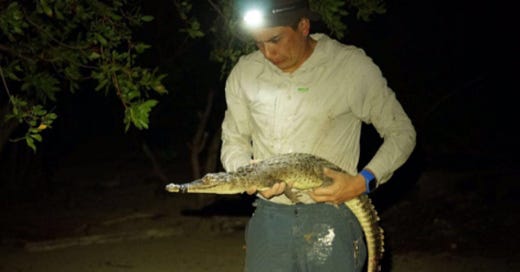One Planet News: Two new species discovered
Conservation efforts needed to protect these two new species
By Annette J Beveridge
We think we know everything we need to know about nature, and yet, two previously unknown species of crocodiles have just been discovered.
One crocodile was living on the island of Cozumel and the other on the atoll of Banco Chinchorro, both off the Yucatán Peninsula. These new species live in small, isolated populations. There are fewer than 1,000 breeding individuals, and while both populations appear stable, we cannot ignore the limited numbers and restrictions on habitat; they are vulnerable.
Principal investigator, biology professor Hans Larsson, said: "Biodiversity is disappearing faster than we can discover what we’re losing.
"Most species of crocodiles are already endangered, and rapid shoreline development threatens nearly every population. Our research aimed to uncover the true diversity of crocodiles on these isolated islands."
Read more: The secret of flight
Larsson and his team analysed the genetic sequences of crocodile populations from Cozumel and Banco Chinchorro. They compared the sequences to crocodiles across the Caribbean, Central America and Mexico’s Pacific coast. There were striking levels of genetic differentiation, leading the researchers to conclude that these populations were not simply variants of Crocodylus acutus but two new species that have not yet been named.
Larsson added: “The rapid loss of biodiversity can only be slowed if we know what species are most at risk. Now that we recognise these crocodiles as distinct species, it’s crucial to protect their habitats. Limiting land development and implementing careful conservation strategies on Cozumel and Banco Chinchorro will be key to ensuring their survival."
Former Larsson graduate student and lead author, José Avila-Cervantes said: “These results were totally unexpected. We assumed Crocodylus acutus was a single species ranging from Baja California to Venezuela and across the Caribbean. Our study is the first to extensively explore genomic and anatomical variation in these animals."
The research was funded by the Canadian Foundation for Innovation, the Digital Research Alliance of Canada) the Comisión Nacional para el Conocimiento y Uso de la Biodiversidad, and the Natural Sciences and Engineering Research Council of Canada.





